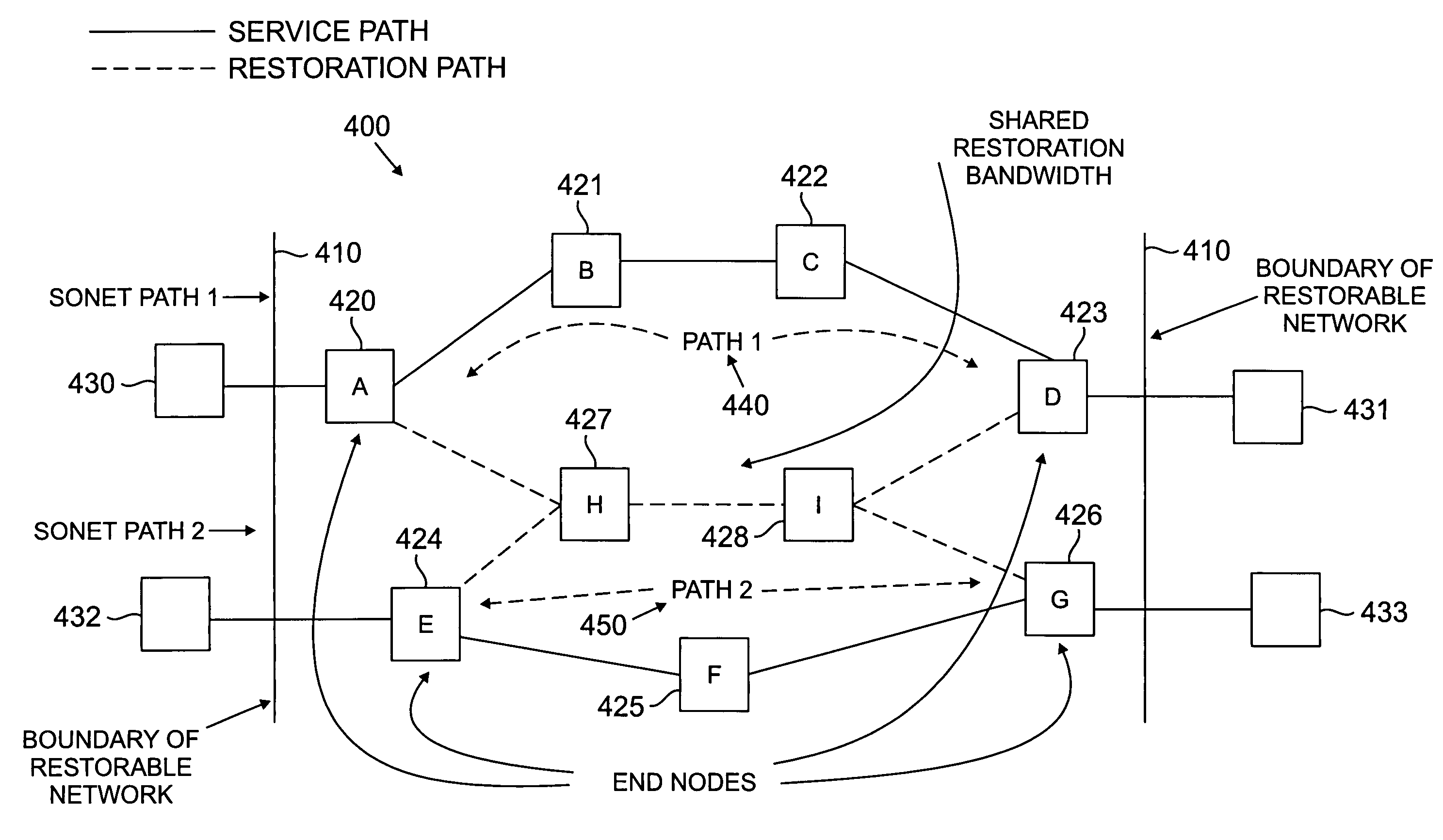Method and apparatus for signaling path restoration information in a mesh network
a signaling path and mesh network technology, applied in the field of signaling path restoration information in a mesh network, can solve the problems of inability to provision and failure of the signaling path, and achieve the effect of efficiently using bandwidth
- Summary
- Abstract
- Description
- Claims
- Application Information
AI Technical Summary
Benefits of technology
Problems solved by technology
Method used
Image
Examples
Embodiment Construction
[0035]FIG. 4 illustrates an exemplary network 400, such as a SONET network, in which the present invention can operate. Generally, the network 400 includes at least three conforming nodes, such as nodes A, B and D, each referred to as restoration nodes, and has well-defined end-to-end paths, such as Path 1 and Path 2. It is noted that each of the nodes shown in FIG. 4 are conforming nodes. In addition, non-conforming network elements (not shown), such as those without the necessary functionality and databases, can be positioned in between the restoration nodes and do not prevent restoration in accordance with the present invention. The present invention may be employed in any mesh network in which the restoration nodes can (i) originate and terminate paths, and (ii) read restoration-related information from and write restoration-related information into path overhead or payload as described in this document.
[0036]Generally, when a node does not terminate a path in a SONET network, t...
PUM
 Login to View More
Login to View More Abstract
Description
Claims
Application Information
 Login to View More
Login to View More - R&D
- Intellectual Property
- Life Sciences
- Materials
- Tech Scout
- Unparalleled Data Quality
- Higher Quality Content
- 60% Fewer Hallucinations
Browse by: Latest US Patents, China's latest patents, Technical Efficacy Thesaurus, Application Domain, Technology Topic, Popular Technical Reports.
© 2025 PatSnap. All rights reserved.Legal|Privacy policy|Modern Slavery Act Transparency Statement|Sitemap|About US| Contact US: help@patsnap.com



